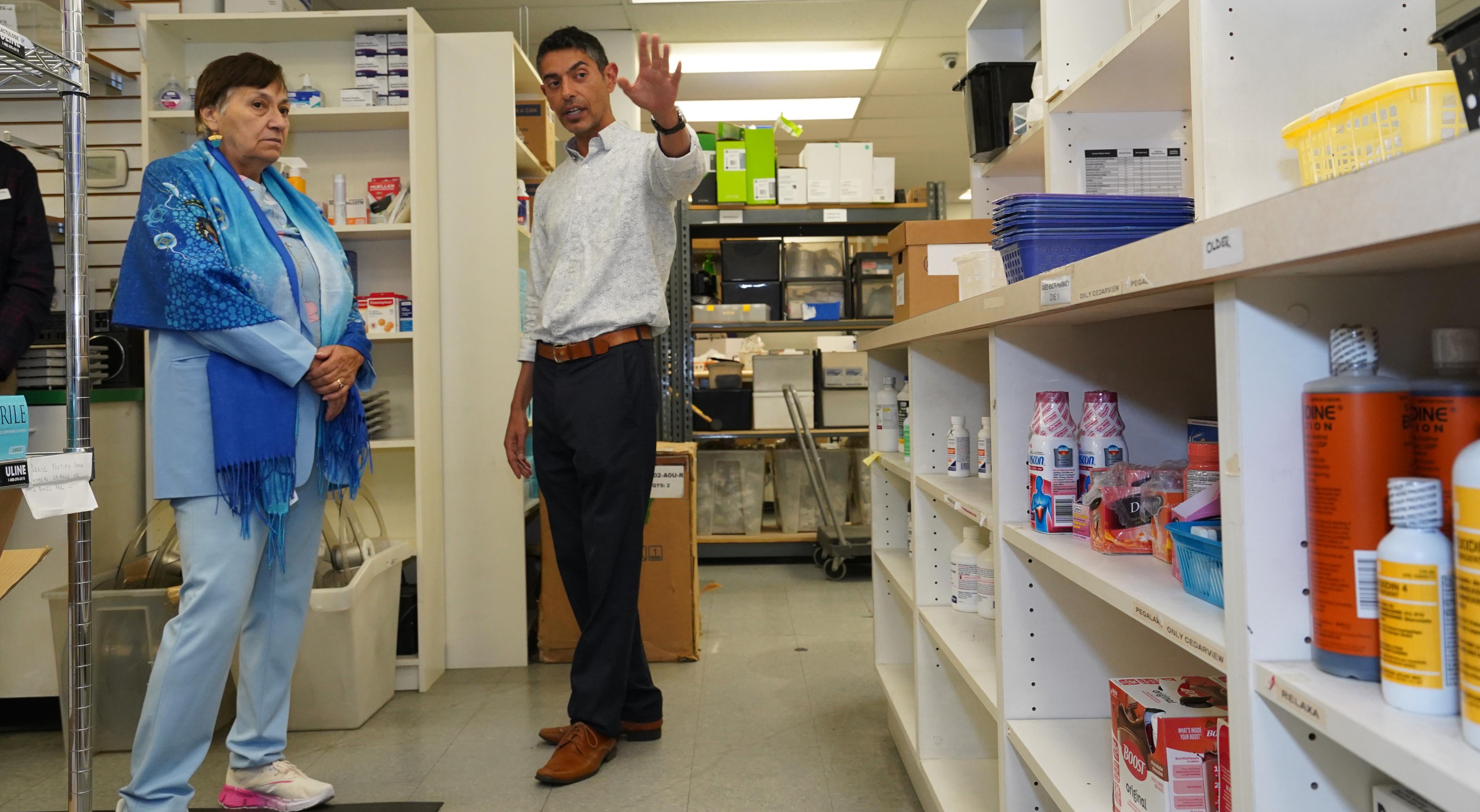B.C. follows a long line of provinces that have already implemented medication incident reporting in years prior, and it’s expected that the program in British Columbia will be very similar to its counterparts in the rest of the country.
The College of Pharmacists of British Columbia said all eight other provinces already in the program follow the same National Association of Pharmacy Regulatory Authorities (NAPRA) standards. All provinces involved submit data to ISMP Canada’s National Incident Data Repository Program (NIDR) for community pharmacies.
Omar Saad, currently CEO at OASES Health Pharmacy, was senior national director, specialty pharmacy, at Remedy’sRx when Ontario first adopted medication incident reporting in 2018.

Omar Saad (right) was senior national director, specialty pharmacy, at Remedy'sRx when Ontario first adopted medication incident reporting in 2018.
He shared some advice for pharmacists in British Columbia, which is scheduled to have mandatory incident reporting take effect on June 1, 2026. Saad recommends that pharmacy owners and managers focus on educating and training all staff so everyone is fully aware of the new requirements, and how their roles and responsibilities fit into the new processes.
With sometimes more than 40 staff working at each pharmacy, Saad said it was important that team leaders were appointed with responsibility to collect each medication incident’s information and enter the information into the reporting platform. The system then notifies the pharmacy manager and an action plan is developed. Depending on the severity of the incident, additional notifications might occur.
“When an incident occurs, it is usually a break in one of the processes or steps in the dispensary. The process needs to be non-punitive, this approach ensures buy-in from the team and a successful adoption,” he said.
One piece of advice he shared is to take the time to select a reporting software that is right for your pharmacy’s needs. This means that pharmacy owners and managers might want to arrange exploratory meetings with software vendors to communicate the unique needs of their pharmacies, as systems can often be customized for the pharmacy. Another piece of advice he shared is to examine the reporting software to ensure ease of use by team members. Reporting software often use mandatory data fields and standardized drop-down menus, he said, which can be important to help produce accurate and meaningful reports, but having too many required fields and drop-down menus can risk disengaging staff members.
With these reporting systems becoming more common in Canada, even patients are becoming aware of the reporting requirements, Saad said.
“Recently, we had a medication incident reported and a family member of the patient requested that we report the incident to ISMP for shared learning and data collection,” he said. “Medication incidents are one of the leading causes of preventable hospitalization and I believe British Columbians are learning more about these incidents and the best practices in terms of reporting, root cause analysis, and action plans.”
Heidi Wittke, senior director, professional affairs and pharmacy partnerships at Rexall, also shared lessons her company learned when implementing the program in other provinces.

She said one of the most important things the company did was to build a culture of continuous learning.
“Building that culture of continuous learning reframes the conversation and moves away from ‘blame’ culture,” she said. “When there is a culture of safety, staff feel safe to report, and we did a lot of training to ensure pharmacy teams understand why we’re doing this, what’s in it for them, and how this process is going to serve them and their patients.”
Rexall pharmacies in Manitoba, Saskatchewan and Ontario have already been participating in medication incident reporting, with Alberta to join the requirements in February 2025. She said one of the positives of working with ISMP Canada is that reporting fields are very consistent around the country.
Instead of adopting commercially available reporting software, however, the company decided to create its own. Each pharmacy team, she said, has access to their own records so team members can identify insights into factors that are leading to incidents or patterns that can be identified among incidents. An important consideration is to ensure the reporting process is easy for staff to use, so team members aren’t discouraged by the documentation process.
“It’s anything that saves time for the user to input the information, draw conclusions or insights quickly, and also the ability to notify the right individuals in an organization, so we can further support the incident if it needs to be escalated,” Wittke said.
In terms of preparing teams in advance, important considerations include making team members aware of the new requirements and giving them opportunities to train using the reporting software.
“We would have formal training where we would walk team members through a medication incident, and when our leaders visit stores, they would make sure team members knew how to access the reporting tool, and answer any questions they might have,” she said.
One way her company encouraged medication incident reporting is by celebrating “near miss” incidents.
“Reporting near misses is a gift. We would make it fun and celebrate the best ‘catch’ of the day. So if you’re a pharmacy team member and you caught an incident, those are the things we need to celebrate. It didn’t get to the patient,” Wittke said.
“If one store has a higher number of medication incidents, we would consider that a good thing, because that is a store that is reporting. It would be the stores that have low numbers, that are underreporting, that we would go nudge.”
